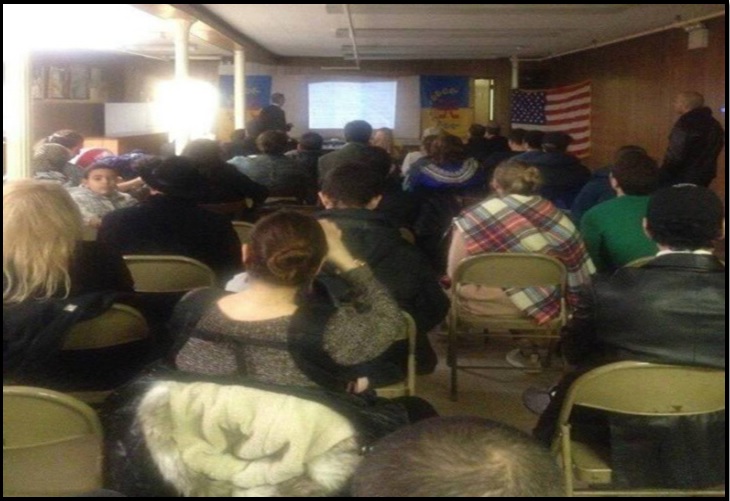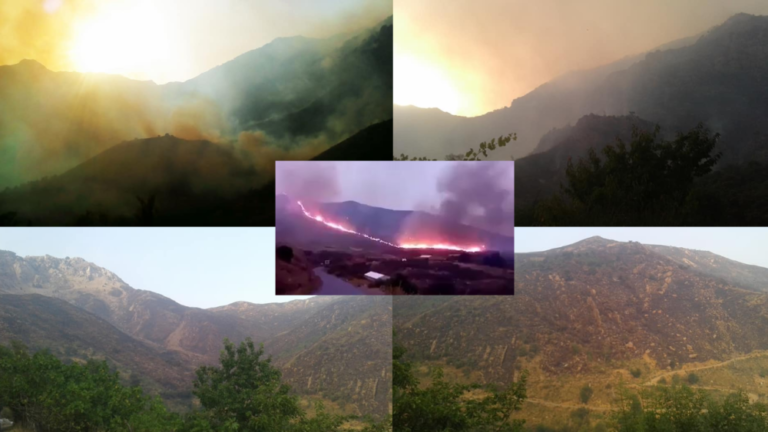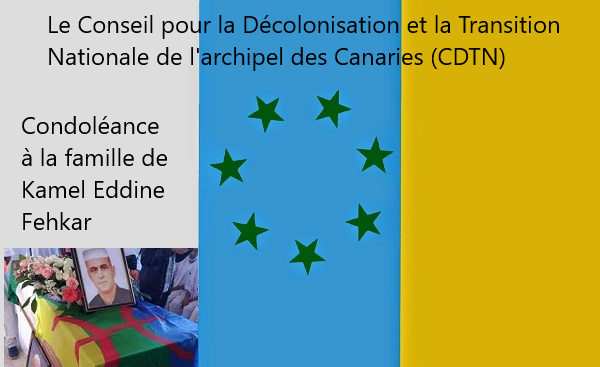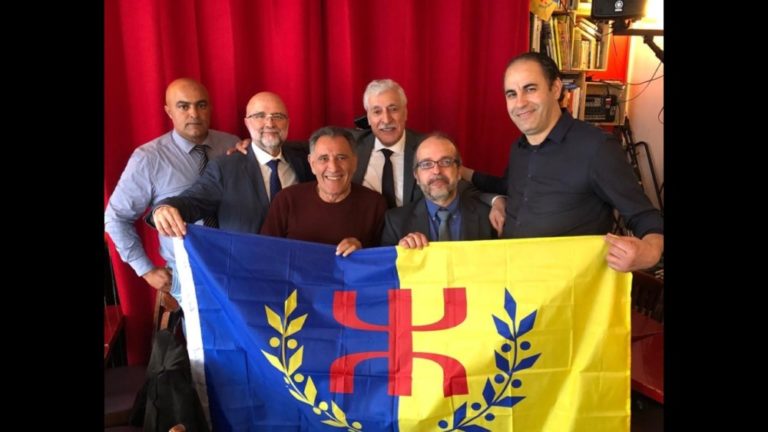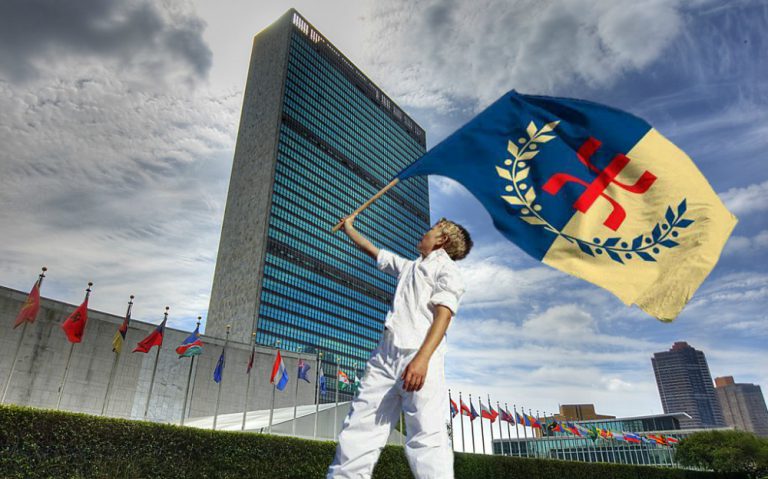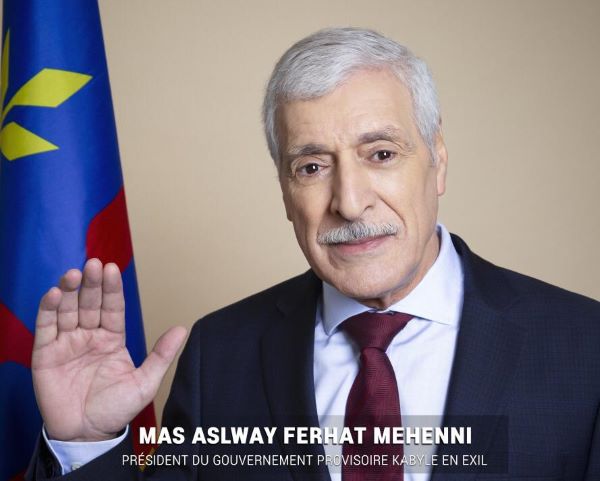Berber new year in a ukrainian church, by Bill Weinberg
NEW YORK (SIWEL) —All Saints Ukrainian Church on East 11th Street, with its colorful mosaic facade, was the unlikely venue on Saturday Jan. 16 for the metro area Berber community’s celebration of their traditional new year holiday, Yennayer. On the wall of the church’s downstairs meeting space, paintings of orthodox saints formed a backdrop to the flag of Kabylia—the increasingly restive Berber region of Algeria’s northern mountains. By an interesting chance, it has the same blue and yellow colors as the Ukrainian flag. It was still a little odd to hear strains of North African music and eat delicious couscous in a Ukrainian church.
Yennayer has taken on a special significance in the current Amazigh cultural renaissance—especially for the inhabitants of Kabylia and their worldwide diaspora. The highlight of the celebration at All Saints Church was an exposition by Sadi Melbouci, an Amazigh businessman and political leader who flew in from his home in Denver for the affair, entitled “Kabylia’s Path to Freedom.” Tired of what they see as second-class citizenship under a regime officially committed to Arab nationalism, more and more Kabyles (as the indigenous Amazigh of the region are called) view themselves as a colonized people, and are calling for independence from Algeria.
“We share common values of liberty and justice with Americans,” Melbouci said. “The United States declaration of independence is testament to all who seek freedom around the world.” By his history, Kabylia was at least de facto independent from ancient times until 1857, when it was forcibly absorbed into the French colony of Algeria—with much bloodshed.
Melbouci envisions an independent Kabylia as a North African Switzerland—citing its commitment to peaceful secularism and tradition of decentralized “village republics,” as well as its mountainous (and comparatively green) landscape.
The cross-fertilization with the East Village Ukrainian community began in October, when followers of the Kabylia Self-Determination Movement (MAK) symbolically raised their blue-and-yellow flag on their own portable pole outside the UN building, as a statement of their intent. Days later, they held a celebration of the feat, with live music and couscous, at the Ukrainian National Home restaurant on Second Ave. And the Ukrainian struggle against Russia over the past generations is arguably a parallel to the Kabyle struggle against Algeria.
Four days before the East Village Yennayer celebration, thousands of Imazighen marked their new year by marching in Tizi Ouzou, Kabylias’ central city, to assert their right to self-determination. They also rejected proposed constitutional changes unveiled by Algeria’s government earlier this year.
In addition to limiting presidents to two terms—a concession to pro-democracy advocates—the constitutional reform would make the Berber tongue, Tamazight, an “official language.” This upgrades its current status as a “national language,” instated in 2002 following a wave of Berber protests the previous year. But the new protesters consider the change inadequate, as it maintains the primacy of Arabic. They also reject constitutional provisions that only Arabic-speaking Muslims can be elected to the presidency.
MAK’s New York coordinator Mansour Bensahnoune Ulhady told me: “By putting Tamazight in a secondary paragraph in the so-called constitution, the Arab regime of Algeria really showed its colonial nature… This Yennayer march clearly gave the Kabylian independence movement a great mandate in pursuing the fight for independent and free Kabylia, and for establishing a strong democratic and secular state that will serve as an example and model for all North Africa and all the oppressed peoples of the world.”
It gave this old peacenik pause when Melbouci called for US military bases in a free Kabylia. He portrayed the country as a potential bulwark against jihadism throughout the region. “If US had military bases in Kabylia, what happened in Benghazi would not have happened,” he said.
In any case, Kabylia could erupt into the world headlines very soon—despite the fact that few outside the Berber diaspora have heard of it in the United States. Once again, the East Village is ahead of the curve.
Article has been updated and enriched by a video of the conferance to the Dr. Sadi Robin Melbouci in english
SIWEL 291134 JAN 16

